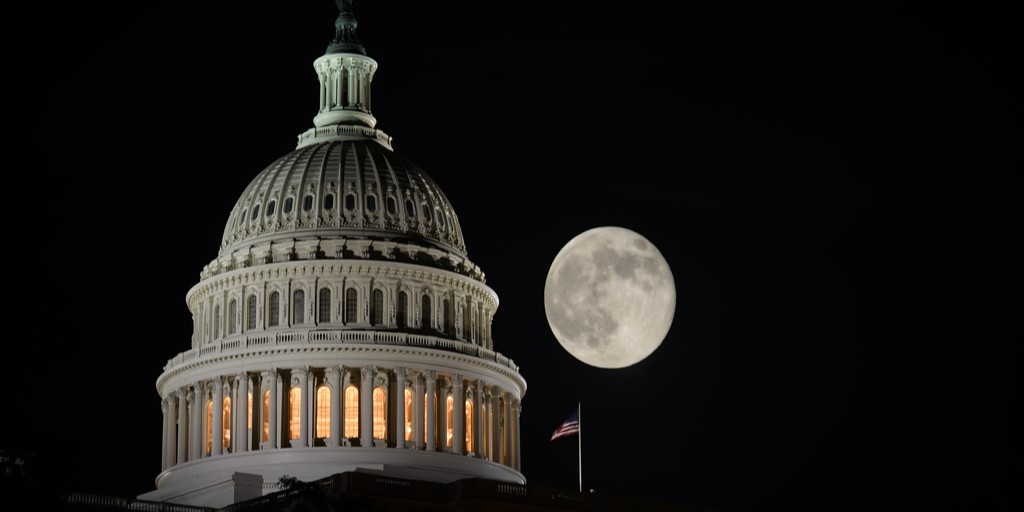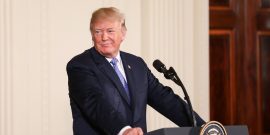Despite all appearances, the Democratic takeover of the House increases the odds of Trump’s reelection in 2020.
Who Reaches the Pinnacle of Power in Congress, and Why?
Few would dispute the critical role that party leaders play in Congress today. They are intimately involved in every stage of the legislative process. Leaders set the agenda, resolve disagreements over controversial issues, and structure the process to ensure that legislation crafted behind closed doors passes. Leaders also prevent legislators from raising issues on the floor that divide their fellow partisans. For these reasons, party leaders exercise centralized control over the legislative process in Congress, especially in the House of Representatives.
It follows, then, that the elections in which legislators choose their leaders are an essential—perhaps the only—opportunity for them to shape what Congress does in the future. Successful candidates will be in a position to help legislators achieve their goals moving forward. According to this view, identifying the candidates who decide to run for leadership, and determining how legislators select among them are vital to understanding Congress and the decisions it makes.
Yet despite the impact of leadership contests on what happens in Congress, political scientists in recent decades have mostly ignored them. Choosing the Leader: Leadership Elections in the U.S. House of Representatives fills this gap by offering what coauthors Matthew N. Green and Douglas B. Harris call “the first systematic analysis of party leadership elections in Congress since the 1970s.”
Pelosi Versus Hoyer, Gingrich Versus Madigan
Green and Harris (the former is a professor of politics at the Catholic University of America, the latter a professor of political science at Loyola University Baltimore) begin by revisiting the conventional wisdom on House leadership elections: that a single factor like ideology or personal relationships explains the votes that representatives cast in these contests. Rejecting these explanations as insufficient, they hypothesize instead that representatives are more likely to choose a candidate with whom they share a professional connection and who they expect will help them achieve their goals in the future. House members have multiple goals that can be categorized based on electoral, policy, and influence concerns. Green and Harris argue that the salience of any one goal is activated by three interrelated factors: the candidates vying for leadership of the House; the campaigns they wage to win their colleagues’ votes; and the broader context within which the leadership race unfolds.
The authors test their theory using data gleaned from 14 House leadership elections held between 1965 and 2013. They find that professional connections developed during shared service in the same state delegation or on the same committee increased the likelihood, on average, that a representative would vote for a candidate by 27 percent and 13 percent, respectively. This analysis also reveals that some combination of members’ goals helped to determine vote choice in every contest examined, depending on its candidates, their campaigns, and the race’s context.
For example, professional connections and representatives’ goals explain the votes cast in the 2001 contest for minority whip between Nancy Pelosi (D-Calif.) and Steny Hoyer (D-Md.), say Green and Harris. Pelosi’s fellow Democrats in the sizable California delegation and those who served with her on the Intelligence Committee were 40 percent and 34 percent more likely, respectively, to back her over Hoyer. Of the policy and electoral goals that were salient in this particular contest, ideology and campaign contributions helped House Democrats decide which candidate to back. Conservative Democrats were more likely to back Hoyer over Pelosi. And campaign contributions were an important indicator of support for both candidates.
As in the Pelosi-Hoyer contest, no single factor accounted for Republicans’ choice in the 1989 race for minority whip between Newt Gingrich (R-Ga.) and Ed Madigan (R-Ill.). Yet unlike in the Democrats’ election, Green and Harris demonstrate that ideology was not one of the primary goals that helped House Republicans choose between Gingrich and Madigan. More important was the preference of younger Republicans for Gingrich’s more confrontational approach to dealing with the Democratic majority. In contrast, older Republicans, many of whom held powerful positions on committees in the House, preferred Madigan’s more accommodating approach to achieve their goals.
According to Green and Harris, this difference reflects a more general distinction between Democrats and Republicans when it comes to vigorously contested leadership elections. Specifically, they find evidence that suggests Republican contests in open leadership elections unfold between candidates who embrace confrontation and those who embrace accommodation as the best way to achieve their goals. In contrast, Democratic contests usually pit the party’s ideological wings against each other.
The House’s Rebellious Republicans
Another thing that Green and Harris demonstrate is that Republicans are more likely to revolt against their leaders than are Democrats. They attribute Republicans’ propensity to revolution to their lack of clear patterns of succession; the general tendency of Republicans to challenge their leaders after unexpected electoral losses; and their corporate leadership structure, as opposed to the Democrats’ more hierarchical structure. What is meant by “corporate” is a leadership structure in which positions are separate, given specific duties, and filled individually (like a CEO or CFO or other position with unique responsibilities), as compared to a hierarchical organization in which one all-powerful leader directs other positions and in some cases even fills them.
While the authors concede that ideology played a role in who won and who lost each of the contests they examined, they note that it was only one of several goals that shaped the outcome in each. They also argue, persuasively, that ideology, along with legislators’ other goals, was activated by factors related to the candidates running, the campaigns they waged, and the specific context of each race. Campaign contributions to members from potential House leaders were also an important indicator of who would win most of the contests they examined. They attribute this to the sense of obligation members feel when they receive campaign donations from their colleagues who are vying for a leadership role. They argue that the increased prominence of money in legislators’ choice of who is to lead them nowadays makes sense given their expectations that leadership candidates will help raise money for the party collectively if they are successful. Campaign donations have thus become an important indicator of a candidate’s ability to do the job.
In Choosing the Leader, Green and Harris effortlessly blend a rigorous methodology with a compelling narrative to make a persuasive case in support of their new theory of leadership elections. In the process, they provide a new and innovative way to understand congressional decisionmaking. Their explanation of candidate emergence is especially helpful for conceptualizing institutional change in the House of Representatives over time. This is because changes in the internal balance of power influence which members decide to run for leadership and, relatedly, how their fellow partisans evaluate their candidacies.
While future developments may deemphasize aspects of the professional connection hypothesis, their theory will remain well-suited to accommodate such events in the future. For example, the declining influence of committees in a leader-dominated House may reduce committees’ ability to serve as forums in which meaningful professional connections can develop. However, state delegations will persist, and other groupings like intra-party caucuses might rise to take the place once held by committees. Similarly, a party’s internal dynamics could shift over time as its coalition changes, causing the relative importance of ideology or confrontation to move as well. Yet there is no reason to expect legislators’ goals to no longer shape their vote choice in contested leadership elections.
Regardless of how these trends turn out, they will be better understood if the theory articulated by Green and Harris in Choosing the Leader is kept in mind. For that reason, their book will be of interest to anyone who wants to understand better how Congress operates today, and how it will operate in the future.


